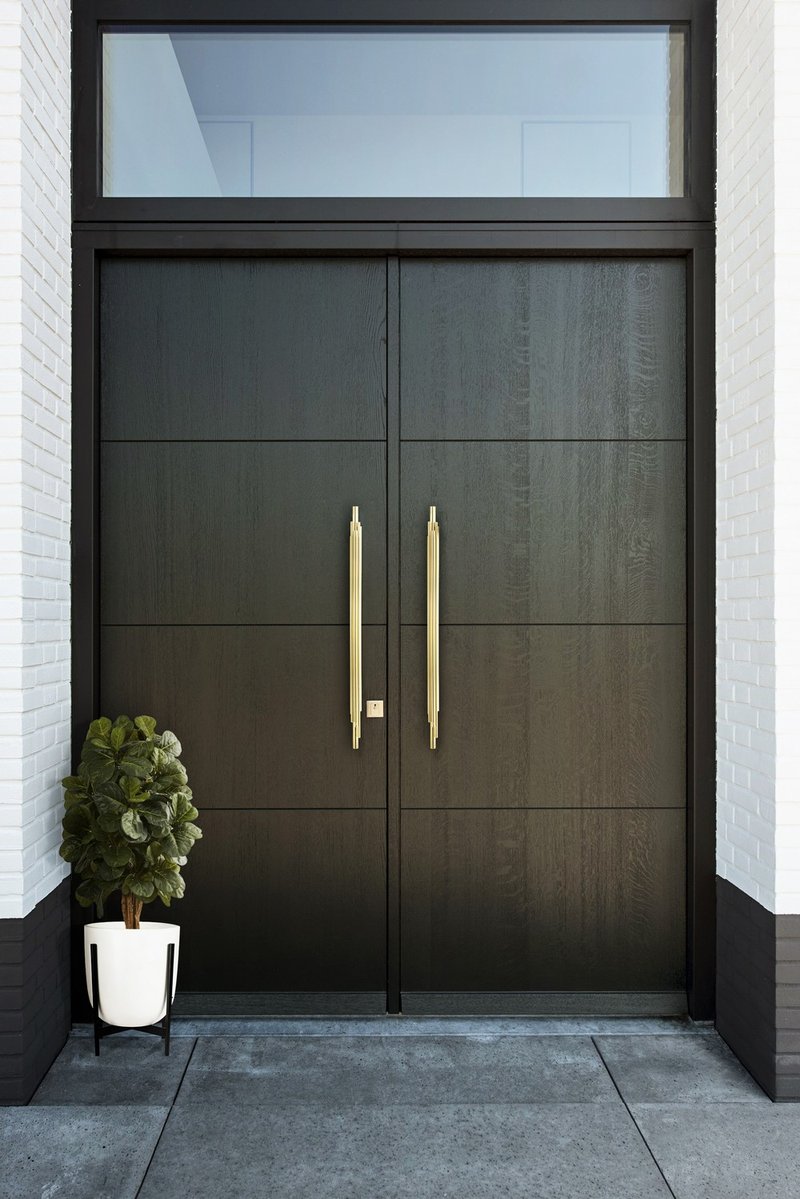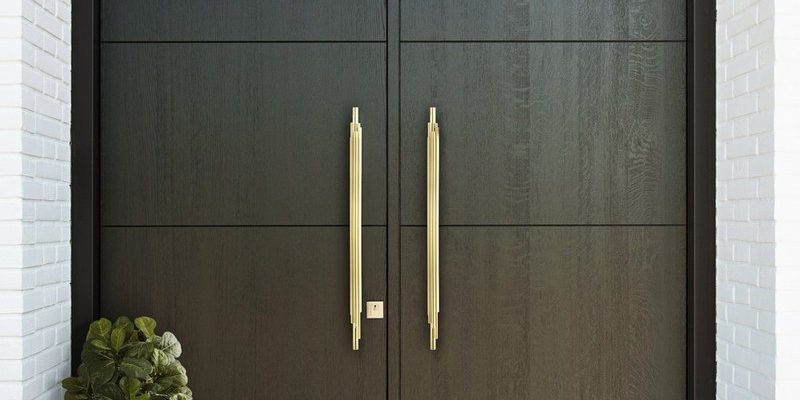
Honestly, it’s easy to get distracted by the shiny stuff—glossy finishes, modern keypads, or cool “smart” features that sync with your phone. But if the basics aren’t there, no amount of tech wizardry can make up for poor craftsmanship or flimsy materials. Let me walk you through the best ways to identify quality exterior door hardware, step-by-step, so you can shop with confidence—and never get stuck with a dud again.
Why Exterior Door Hardware Quality Really Matters
First off, why fuss over door hardware? Here’s the thing: your exterior doors are your home’s main line of defense. The right lock, handle, or remote-controlled latch isn’t just about curb appeal—it’s about real security and peace of mind.
Have you ever had a lock that just wouldn’t turn, or a key that jammed on a rainy night? Cheap or poorly made components can leave you stuck outside or, even worse, make your home an easy target. Quality hardware means:
- Smoother locking and unlocking every time
- Less risk of break-ins or forced entry
- Longer lifespan (less replacing, less stress)
- Consistent performance, even with smart features or battery-powered remotes
Think of it this way: if you’re going to trust your security to a piece of metal and some code (in the case of smart locks), you want to know it won’t let you down when it counts.
Check the Material: What’s It Made Of?
When you’re picking out exterior door hardware, don’t just go by looks. The *material* tells you a lot about how it’s going to stand up over time. The best options are usually made from solid brass, bronze, or stainless steel. These metals are naturally resistant to corrosion—important if you live in a rainy or coastal area.
Let me explain how materials stack up:
- Brass and Bronze: Heavier and more solid. They age nicely, resist rust, and usually feel cool and weighty in your hand.
- Stainless Steel: Great for modern looks, and nearly bulletproof against the weather. It will not chip or flake like cheap coatings.
- Zinc or Painted Aluminum: Often found in budget options. These are lighter, less secure, and can corrode or peel over time.
Here’s a simple test: pick up the hardware in your hand. If it feels light and hollow, it’s probably not built to last. Quality hardware should feel hefty and solid. If you’re looking at smart hardware, like remote-controlled deadbolts, make sure the outer shell isn’t just plastic over cheap metal—you want all the moving parts to be robust, too.
Pay Attention to Security Ratings and Certifications
Not all locks are created equal—some are harder to pick, bump, or break than others. Here’s what you want to look for: ANSI/BHMA grades. These are industry standards in the US, and they actually mean something.
Grade 1 is the best, typically found on high-quality deadbolts and commercial locks. Grade 2 is still decent for homes, while Grade 3 is the bare minimum (and not recommended for front doors if you care about security).
Always check the packaging or product specs for an ANSI/BHMA grade. If the brand doesn’t mention it, be skeptical.
For smart locks or remotes, see if they’re certified by reputable groups (like UL or the equivalent in your country). This tells you the product’s been tested for hacking, battery safety, and durability—not just basic mechanical strength.
Examine the Finish: Beauty and Endurance
Looks matter, but finishes are about more than just matching your house numbers. A good finish prevents tarnishing, scratching, and rust. Here’s the thing: quality brands like Schlage, Baldwin, or Yale offer lifetime warranties on finishes because they’re built to last.
Watch out for:
- PVD (Physical Vapor Deposition) finishes—these are super-durable, resist fading, and won’t rub off easily, even after years of use.
- Clear-coat lacquers—common but less effective. Scratches or sun exposure can damage these quickly.
- Painted finishes—often found on budget hardware. These chip and peel, especially in harsh weather.
If the finish on a remote keypad or smart handle looks thin, uneven, or chips with a fingernail, that’s a warning sign. Real quality feels *smooth and strong*—not plasticky or cheap.
Test the Mechanism: How Does It Feel?
You might be wondering how a lock or handle “feels” actually tells you about its quality. Honestly, it’s one of the best indicators. When you turn a quality knob, pull a lever, or hit the button on a smart remote, the mechanism should be *smooth*, *quiet*, and *solid*.
Here’s what to try:
- Insert the key and turn—there shouldn’t be any grinding or resistance.
- Try the handle or thumb-turn. It should snap back crisply, not flop around.
- Test a cordless remote or battery-operated lock for responsiveness—the code should register instantly, and the locking motor should sound strong (not weak or delayed).
Cheap locks often have loose parts, wobbly plates, or feel “spongy.” If you’re syncing a remote device, make sure the pairing process is simple and reliable—laggy response or frequent resets are red flags.
Look at the Brand Reputation and Warranty
You don’t always have to buy the most expensive option. But in the world of door hardware, the brand *really* does matter. Companies like Schlage, Yale, Baldwin, and Emtek have built their reputations over decades for a reason: they stand behind their products.
Here’s a quick breakdown:
- Top brands: Often offer lifetime mechanical and finish warranties, with great customer support.
- Generic or off-brand options: Usually have limited warranties and spotty backup if things go wrong.
A quality brand puts its name front and center, along with clear instructions (for code programming, syncing, or troubleshooting if you’re using remotes). Always check the warranty—if the company only covers parts for a year, that’s not a good sign for exterior use.
Consider Features: Do You Need Smart or Remote Hardware?
These days, exterior door hardware isn’t just about keys. You can get keypads, remotes, WiFi locks that sync with your phone, or even systems that reset automatically after too many failed entry codes. But all the tech in the world is useless if the fundamentals aren’t strong.
When comparing options, think about:
- Battery life: For remotes, code locks, or wireless systems, batteries should last at least 6–12 months. Frequent battery changes mean cheap electronics.
- Pairing and setup: The pairing process should be straightforward. If you’re constantly having to reset or re-sync, that’s a problem.
- Manual override: Even with a fancy smart lock, you should be able to use a real key if the battery or remote fails.
Smart features are great—but only if they don’t add hassle or complexity every time you try to get inside.
If you live in a high-traffic area or want simple, foolproof reliability, sometimes a classic high-grade deadbolt is the best option. Remote locks are great for Airbnb or rental properties but make sure you pick a reputable brand.
Installation and Maintenance: Don’t Ignore the Details
Here’s a detail many people forget: even the highest-quality hardware can fail if it’s not installed properly. Whether you’re hiring a pro or doing it yourself, a precise fit is key. Misaligned deadbolts, loose strike plates, or over-tightened screws can damage even the best lock.
A few tips:
- Follow the manufacturer’s step-by-step instructions closely.
- Check that batteries are installed correctly in remotes or smart locks, and that code resets or sync operations complete without errors.
- Test the hardware several times before calling it done—make sure everything operates smoothly with the door closed and locked.
Quality hardware usually comes with better instructions, labeled parts, and even troubleshooting guides for common issues like battery changes or re-syncing remotes. A good setup today means less hassle down the line.
Final Thoughts: Choosing Exterior Door Hardware You Can Trust
Choosing quality exterior door hardware isn’t just about picking something that looks nice or has the latest code features. It’s about finding hardware that’s strong, reliable, and designed to last—whether you’re unlocking with a key or a remote. If you focus on sturdy materials, trusted brands, proven security ratings, and a smooth feel in your hand, you’ll make a choice you won’t regret.
Don’t get swept away by flashy features or bargain prices. Real peace of mind comes from hardware that does its job, day in and day out—no drama, no surprises. Take your time, trust your instincts, and remember: the right door hardware is an investment that pays off every time you come home.
